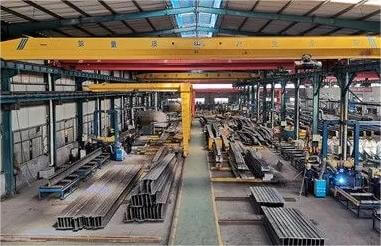Dapeng Town Industrial Park, Tongshan District, Xuzhou City, Jiangsu Province, China
The weld connection in steel structures mainly adopts arc welding, that is, at the connection of components, the high temperature generated by the arc will melt the metal of the welding rod or welding wire placed at the weld position, so that the components are connected together. Arc welding is divided into manual welding, automatic welding and semi-automatic welding. Automatic welding and semi-automatic welding can adopt submerged arc welding or gas shielded welding.
The connecting parts of ordinary bolt connection include bolt rod, nut and washer. Ordinary bolts are made of ordinary carbon structural steel or low alloy steel structural ; they are divided into rough bolts and refined bolts. Rough bolts are made of unprocessed round rods. The bolt hole diameter is 1.0 to 1.5 mm larger than the bolt rod diameter. They are simple to make and easy to install, but their performance is poor when sheared. They are only used for the connection of secondary components or on the construction site. Temporarily fixed, or used on connections where bolts are used to transmit tension. Refined bolts are made by cutting bar steel on a lathe. The rod diameter is 0.3 to 0.5 mm smaller than the hole diameter. Its shear performance is better than that of rough bolts, but it is rarely used because of the complexity of manufacturing and installation.

The high-strength bolt connection of steel structure is also composed of bolt rod, nut and washer. It is made of high-strength steel after heat treatment. High-strength bolt connection uses a special wrench to tighten the high-strength bolt and apply a specified pre-tension to it. High-strength bolt shear connection is divided into friction type and shear type according to its force transmission method.
Rivets are made of rivet steel with good forging performance. The construction procedure of rivet connection is to first make a hole 1.0 to 1.5 mm larger than the nail diameter on the connected component. Then heat the rivet with a semicircular nail head on one end to cherry red, insert it into the hole, and then use a rivet gun or riveter to rivet so that the rivet fills the nail hole and hits another rivet head. After riveting, the rivet cools and shrinks, generating a clamping force on the connected plate bundle, which is conducive to force transmission. The toughness and plasticity of the rivet connection are relatively good. However, riveting is more labor-intensive than bolting and more material-intensive than welding, and is only used for large-span steel structures that bear large dynamic loads.